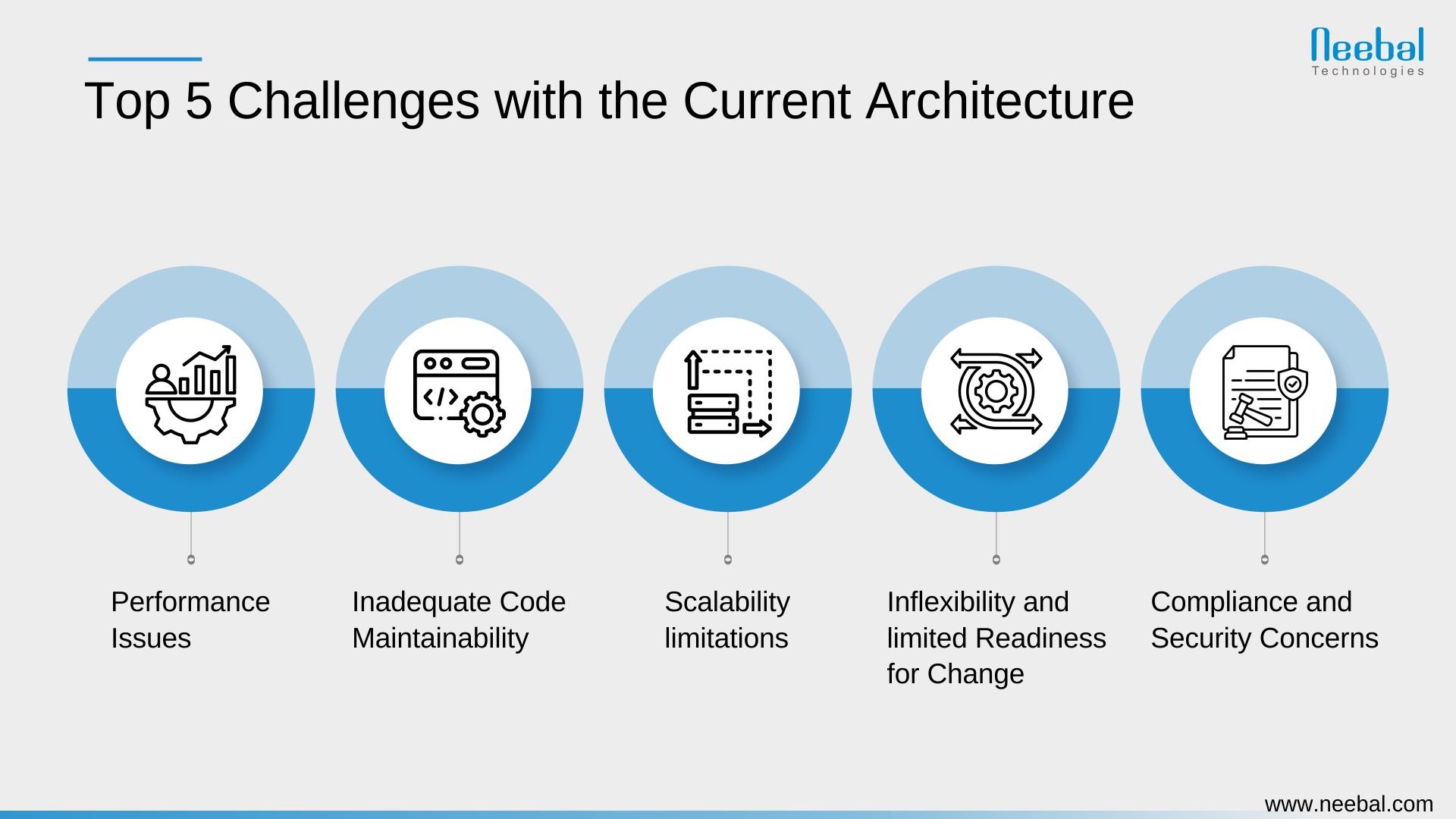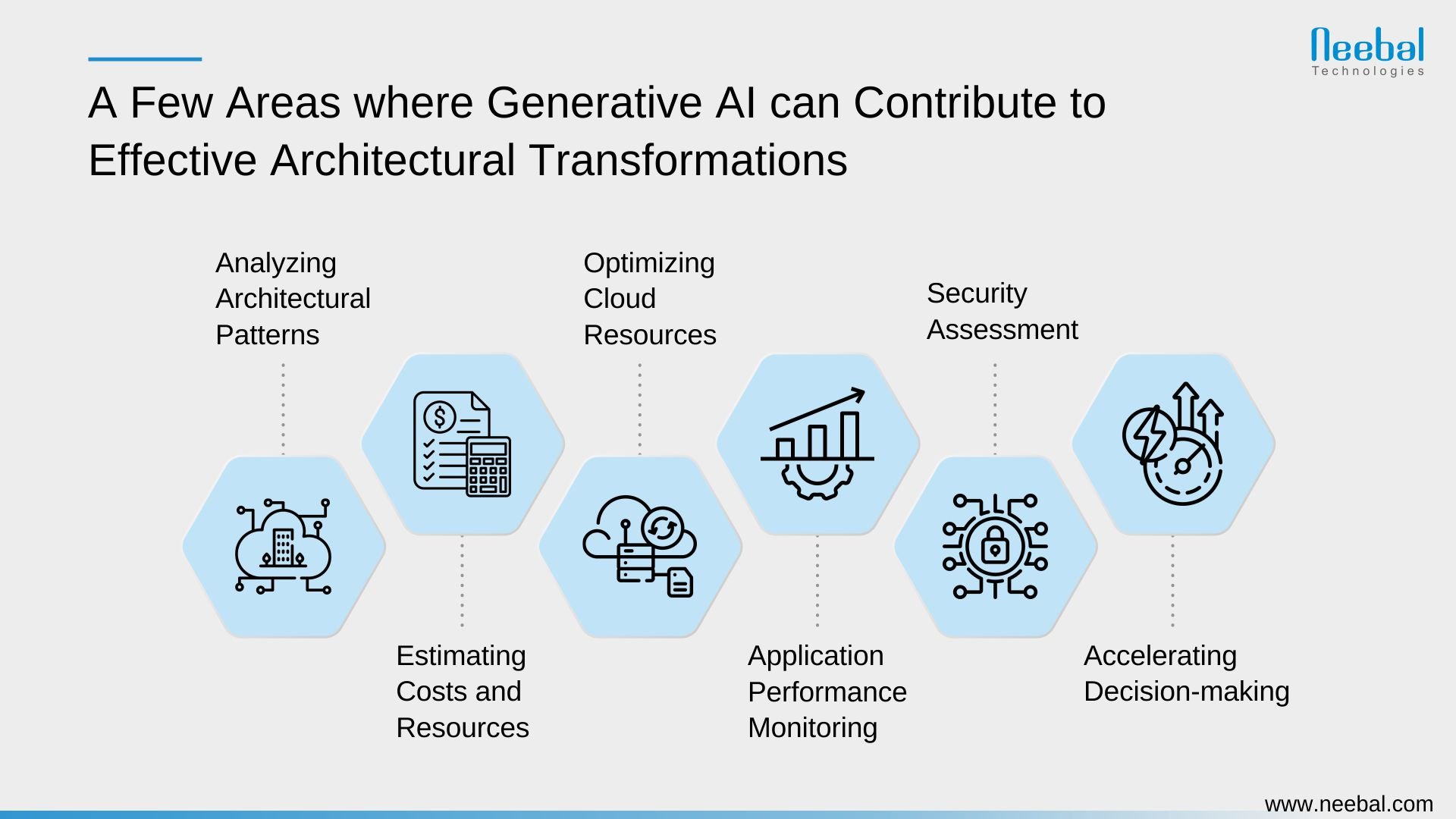Did you know that according to Gartner, by 2023, major organizations will save up to 60% of their IT budget by remodeling their application architectures and 25% of their IT spending by deploying more modern, flexible solutions?
In the continuously evolving landscape of technology, businesses are invariably in a competitive race to develop and implement applications that meet the dynamic and ever-increasing demands of their customers.
The architecture of your application is the bedrock that decides its feasibility, scalability, performance, and reliability, all of which act as key determinants in your venture's success or failure.
A thoughtfully designed and robust architecture caters to scalability, performance, and reliability, which can be the difference between a seamless end-user experience and a detrimental one fraught with extended downtime, slow page loads, and subsequent loss of revenue.
In the confines of this comprehensive guide, we dive deep into the criticality of assessing your application's architecture.
We meticulously explore the multi-step process of architecture assessment, lay out an array of tools and solutions at your disposal, and present you with thought-provoking cases of successful architectural overhauls that propelled the businesses to new heights.
This guide is a repository of valuable insights for C-level executives, IT managers, and software architects tasked with making strategic decisions to future-proof their product and catalyze business growth.
Need for Architecture Assessment
Architecture assessment holds the key to unlocking a plethora of untapped benefits. It aids in the systematic evaluation of your application's architecture against business goals, industry practices, and established technology trends.
ThoughtWorks' Technology Radar provides invaluable insights to identify the best tools, techniques, frameworks, and platforms for your specific needs.
Architecture assessment is crucial for uncovering design and implementation deficiencies that can hamper digital transformation, erode business efficiency, and affect overall competitiveness.
By identifying potential improvements, you can make informed decisions that lead to cost reductions, greater scalability, enhanced performance, and a more secure solution.
Challenges With Current Architecture
Software systems and applications are rarely perfect and are often created with the intention of addressing immediate functionality requirements.
During the early stages of development, businesses tend to prioritize rapid releases under limited time-frames and resources, which may lead to short-term architectural decisions that fall short of addressing long-term concerns.
As a result, these systems may be ill-equipped to scale and adapt to the natural growth and evolution of the business, giving rise to a wide array of issues. Some of the most common challenges with current architectures are:
1. Performance issues
Growing user bases or data loads may severely impact an application's response time and overall performance. Insufficiently optimized frameworks, redundant database queries, and monolithic architectures can contribute to performance bottlenecks that could lead to frustrated end-users.
2. Inadequate code maintainability
Low-quality or overly complex code increases technical debt, amplifying the time, cost, and effort involved in maintaining and updating the application. Improving code maintainability, enforcing best practices, and adopting clear coding guidelines can alleviate this issue.
3. Scalability limitations
Current architectures may struggle to accommodate increased workloads, resource requirements, or storage needs, resulting in degraded user experiences. Decentralized cloud-based solutions, microservices, and other modern architectural patterns can rectify these limitations, but may require significant investments or re-engineering efforts.
4. Inflexibility and limited readiness for change
Legacy systems often suffer from inherent inflexibility due to rigid architectural designs. This makes it difficult to adopt newer technologies or methodologies, such as DevOps or containerization, that promote agility, scalability, and continuous integration and delivery.
5. Compliance and security concerns
Ensuring data privacy, meeting industry standards, and adhering to regulations such as GDPR and HIPAA are significant challenges for current architectures. Limited monitoring, inadequate access controls, and outdated security mechanisms put the application and user data at risk.
A comprehensive architecture assessment holds the answer to these challenges. Through a systematic evaluation process, businesses can identify opportunities for improvement, devise a strategic roadmap, and create a future-proof, scalable, and reliable system that serves their goals.

Detailed Steps of Architecture Assessment Process
1. Understanding Business Goals and Objectives
The first step in architecture assessment is to gain a comprehensive understanding of your organization's strategic goals and objectives.
This crucial alignment ensures that your architecture assessment process aligns with the desired business outcomes, ultimately driving efficiency, returns, and growth.
2. Assessing Existing Architecture
The next step involves evaluating your current architecture by determining the efficiency of your code, technology stack, deployment environments, and infrastructure.
It's vital to consider whether adopting a monolithic or microservices architecture would best serve your needs. Equally important is selecting a technology stack conducive to future scalability, performance, and maintainability.
3. Evaluating Cloud Infrastructure
Evaluate and compare cloud infrastructure providers, such as Amazon Web Services (AWS), Microsoft Azure, and Google Cloud Platform (GCP), to find the right fit for your organization.
Weigh the pros and cons of different cloud deployment options, such as Infrastructure as a Service (IaaS), Platform as a Service (PaaS), or Serverless computing, based on your business objectives and budget constraints.
4. Data Management
Efficient data management is the cornerstone of scalable applications. Assessing your existing data management practices uncovers potential areas for improvement.
Consider integrating scalable data management frameworks and key components of the Big Data ecosystem, like Hadoop or Apache Cassandra, if applicable.
5. Assessing Current CDN Practices
Content Delivery Network (CDN) assessments determine how effectively your application delivers content to users.
Evaluate your current CDN provider and explore alternative options to ensure high availability, fast load times, and an optimal user experience.
6. Security Concerns
A comprehensive architecture assessment must scrutinize current security measures. Rigorously examining existing safeguards identifies weaknesses and areas for improvement, ensuring the implementation of airtight security measures that protect your application and users from potential threats.
Tools and Solutions
Employing advanced tools and techniques streamlines the architecture assessment process. Here are some popular options, each discussed in detail:
SonarQube: A powerful code analysis platform that evaluates code quality, detects security vulnerabilities and bugs, and helps standardize coding practices.
Grafana: A multi-platform open-source analytics and visualization platform that provides real-time insights into system performance.
New Relic: An all-in-one application performance monitoring solution that offers a deep understanding of your application's performance and infrastructure in real-time.
Case Studies of Successful Architectural Overhaul
Numerous businesses have flourished by implementing comprehensive architecture assessments and strategic overhauls. Let’s examine some influential domain-specific case studies that attest to the transformative potential of architecture assessment:
Etsy's Transition to a API-based architecture: Etsy, a global marketplace for vintage and handmade items, shifted to an API (Application Programming Interface) based architecture. The new architecture improved scalability, increased the speed of delivery times, and allowed for easier third-party integrations.
The Guardian's shift to microservices: Media giant, The Guardian, overhauled its architecture by shifting to a microservices-based approach. The move allowed them to reduce the delivery times of digital content and improve resource utilization.
Twitter's overhaul from Ruby to Java: Twitter is a prime example of a company which outgrew its original architectural decisions. The platform experienced scalability issues in its early days and a switch from Ruby On Rails to a more efficient Java-based system was made, drastically improving their capacity and performance.
Shopify's migration from a monolith to a modular monolith: Shopify successfully migrated its monolithic architecture to a modular monolith, which helped in scaling their business model and bringing flexibility to their system.
Robinhood's Architecture Evolution: Robinhood, a stock trading platform, transitioned from a monolithic application architecture to a microservices-based architecture to support its rapid growth. This transition allowed Robinhood to scale efficiently, handle increasing traffic, improve resource allocation, and achieve greater fault tolerance.
How Can Generative AI Contribute to Effective Architectural Assessments and Transformations?
In the world of generative AI, the technology has the potential to significantly aid in architecture assessment and optimization. Here are some areas where AI can contribute to architectural improvements:
1. Analyzing architectural patterns
Generative AI can analyze historical and current architectural patterns, learn from successful implementations, and suggest potential improvements based on these findings. By doing so, it can help identify weaknesses and areas for optimization, while taking into account the specific needs, technologies, and constraints of a given organization.
2. Estimating costs and resources
AI can analyze resource allocation and utilization patterns to help estimate the costs and resources necessary for a proposed architecture overhaul. This facilitates more accurate budgeting and resource planning for the architectural transformation project.
3. Optimizing cloud resources
Generative AI can be particularly useful in cloud-based architecture environments. It can help determine the best configurations for optimal efficiency, cost-effectiveness, and performance, while considering factors such as workload patterns, data storage needs, and latency requirements.
4. Application performance monitoring
By incorporating AI within application performance monitoring (APM) tools, accurate predictions of potential bottlenecks, and performance issues can be made. AI-based APM tools can automatically diagnose, troubleshoot, and even fix issues before they significantly impact the application's performance.
5. Security assessment
AI can aid in the security assessment of an architecture by analyzing past security breaches, identifying potential vulnerabilities, and suggesting improvements to ensure robust protection against unauthorized access, data tampering, and breaches.
6. Accelerating decision-making
Generative AI can be instrumental in speeding up the decision-making process for architectural changes by analyzing vast datasets, evaluating multiple architectural options, and prioritizing recommendations based on performance, security, and scalability factors.
Overall, the adoption of generative AI can significantly enhance the efficiency and effectiveness of architecture assessment, providing data-driven insights and recommendations to drive improvements tailored to an organization's specific needs and objectives.

Conclusion
Architecture assessment is the cornerstone of modern, agile development initiatives. Implementing regular architecture assessments not only prepares your organization to tackle unprecedented business growth but also ensures a future-ready, scalable system.
By following this comprehensive guide and identifying focal points for improvement within your existing architecture, you can propel your organization toward ever-greater success.
Armed with valuable tips, case studies, and tools, decision-makers can turn architectural challenges into opportunities and pave the way for growth. Remember, your application's architecture is only as strong as the foundation it is built upon. Invest time and effort into optimizing it and watch your business thrive.



